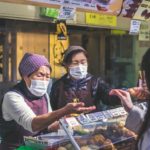 That Covid-19 disproportionately affects the least well off members of society is becoming increasingly established. Poorer people not only tend to have more of the health issues that place them at greater risk from the virus, but their jobs are also those that often cannot be performed remotely.
That Covid-19 disproportionately affects the least well off members of society is becoming increasingly established. Poorer people not only tend to have more of the health issues that place them at greater risk from the virus, but their jobs are also those that often cannot be performed remotely.
This contrast is emphasized in new research from the University of California, Davis, which shows that wealthier communities went from being the most mobile before the pandemic to the least mobile during it, with the opposite the case for the poorest communities.
The scientists compared mobility data from SafeGraph, Place IQ and Google Mobility, which was freely shared to the researchers for the study.
The researchers gathered anonymized data from the location pings of mobile devices between January and April of this year. The analysis found that social distancing varies considerably by the income of people in the United States. They found a 25% jump in the wealthiest communities staying completely at home during the early weeks of the pandemic, versus just a 10% increase among the poorest communities.
“We found that before the pandemic, individuals in the wealthiest neighborhoods tended to be the least likely to stay completely at home on a given day,” the researchers say. “But when the states of emergency came into play, individuals living in the wealthiest areas stayed home the most. It was a complete reversal.”
Social inequality
The data doesn’t provide any concrete reasons for this, but the researchers suggest it might be due to the difficulties many workers in poorer communities have in working from home compared to those in more affluent areas.
“As policymakers are thinking about emergency relief packages, this points to the need for lower-income regions to be an area of focus in order to build capacity for social distancing and other measures critical to reduce the spread of this disease,” said senior the researchers conclude. “This is just one piece of a broader set of emerging results showing that lower-income neighborhoods are particularly vulnerable as the pandemic proceeds.”